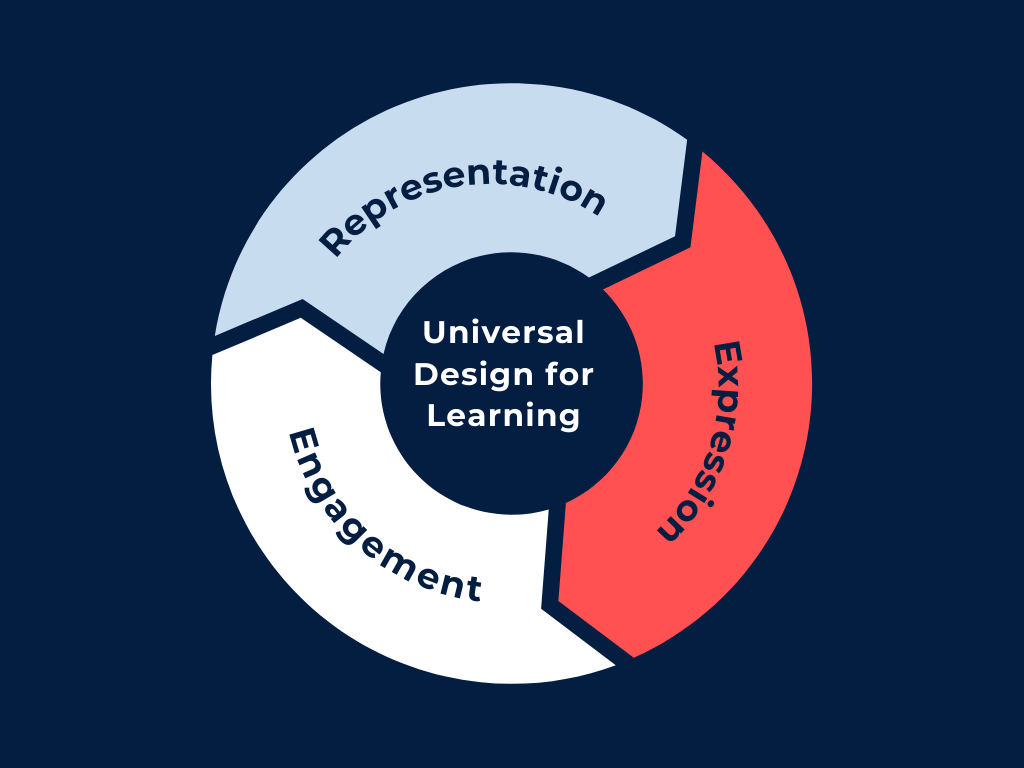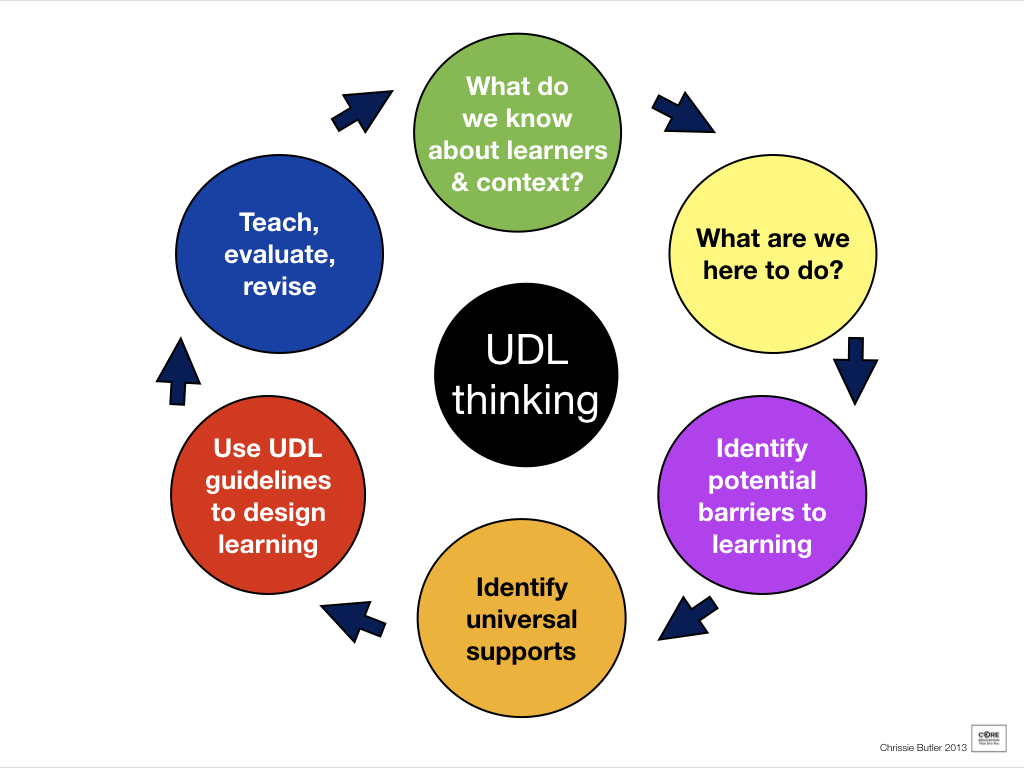Universal Design for Learning (UDL) is an educational framework that promotes inclusivity by providing diverse learning opportunities for all students, regardless of their abilities, backgrounds, or learning styles. Based on cognitive science and research on how individuals learn, UDL emphasizes flexible teaching methods, multiple means of engagement, and adaptable learning environments to accommodate diverse learners.
By implementing UDL principles, educators create classrooms that remove barriers to learning, ensuring that every student—regardless of disabilities, learning preferences, or linguistic differences—has equal access to quality education.
In this article, we explore the core principles of UDL, its benefits, implementation strategies, challenges, and its impact on the future of education.
The Core Principles of Universal Design for Learning (UDL)

The Center for Applied Special Technology (CAST) developed three primary principles that form the foundation of UDL. These principles focus on providing flexible teaching strategies that cater to individual learning needs.
1. Multiple Means of Engagement (The “Why” of Learning)
Students have different motivations, interests, and emotional responses to learning. To foster engagement, educators should offer:
- Choice and Autonomy: Allow students to select topics, projects, or ways to demonstrate their learning.
- Varied Levels of Challenge: Provide tasks that range in complexity to accommodate different skill levels.
- Relevance and Meaningful Learning Experiences: Connect lessons to students’ interests, cultural backgrounds, and real-world applications.
- Support for Attention and Persistence: Use strategies like goal-setting, collaboration, and mindfulness to keep students engaged.
2. Multiple Means of Representation (The “What” of Learning)
Students perceive and process information in different ways. UDL encourages educators to present content through various formats, including:
- Text, Audio, and Visuals: Combine written materials, spoken explanations, videos, and graphics to cater to different learning preferences.
- Interactive and Hands-On Learning: Use experiments, field trips, and manipulatives to make abstract concepts more tangible.
- Language and Symbol Support: Offer glossaries, captions, translations, and simplified explanations to assist diverse learners.
3. Multiple Means of Action and Expression (The “How” of Learning)
Students have different strengths and challenges when demonstrating their knowledge. UDL promotes flexible assessment methods, such as:
- Varied Forms of Expression: Allow students to showcase learning through writing, presentations, art, videos, or digital storytelling.
- Assistive Technologies and Adaptive Tools: Use speech-to-text software, alternative keyboards, and voice recorders to support students with disabilities.
- Scaffolding and Feedback: Offer step-by-step guidance, peer collaboration, and timely feedback to help students improve their work.
The Benefits of Implementing UDL in Education
Universal Design for Learning provides numerous benefits that enhance the overall learning experience for students and educators alike.
1. Increased Accessibility for All Students
UDL ensures that learning is accessible to students with disabilities, English language learners (ELLs), and those with different learning styles. By removing barriers, education becomes more inclusive and equitable.
2. Greater Student Engagement and Motivation
Providing multiple ways to engage with material makes learning more enjoyable and meaningful for students. They feel empowered when they have choices and can approach learning in ways that resonate with them.
3. Improved Academic Performance
When students can access information in formats that suit their needs, they understand and retain concepts more effectively. This leads to higher academic achievement across diverse groups of learners.
4. Encouragement of Creativity and Critical Thinking
UDL promotes diverse ways of thinking and problem-solving. By allowing students to express themselves through various formats, they develop creativity, confidence, and a deeper understanding of concepts.
5. Stronger Classroom Community and Collaboration
By accommodating different learning styles and abilities, UDL fosters an inclusive classroom environment where all students feel valued. Collaboration among diverse learners strengthens peer relationships and teamwork skills.
Effective Strategies for Implementing UDL in the Classroom
Adopting UDL requires intentional planning and the use of varied instructional strategies. Here are some effective ways to integrate UDL into daily teaching:
1. Diversify Instructional Materials
Instead of relying solely on textbooks or lectures, incorporate multimedia resources such as:
- Interactive digital textbooks
- Educational videos and podcasts
- Infographics and visual aids
- Hands-on activities and real-world applications
2. Offer Flexible Assignments and Assessments
Allow students to demonstrate their learning in ways that suit their strengths, such as:
- Writing essays, creating presentations, or producing videos
- Engaging in debates, simulations, or group projects
- Designing creative projects like artwork, music, or coding tasks
3. Use Technology to Support Learning
Technology plays a crucial role in UDL by offering accessibility tools and interactive learning experiences:
- Text-to-speech and speech-to-text software for students with reading or writing difficulties
- Online discussion boards and collaboration platforms to support peer learning
- Adaptive learning apps that adjust content based on individual progress
4. Incorporate Scaffolding and Differentiation
Breaking down complex concepts into smaller, manageable steps helps students succeed. Strategies include:
- Providing guided notes and outlines
- Using graphic organizers to structure ideas
- Offering one-on-one or small-group instruction for additional support
5. Foster a Growth Mindset and Inclusive Culture
Encourage students to embrace challenges and view mistakes as opportunities for growth. Create an inclusive classroom culture by:
- Celebrating diverse perspectives and learning styles
- Encouraging peer collaboration and mentorship
- Offering positive reinforcement and constructive feedback
Challenges in Implementing UDL and How to Overcome Them
Despite its advantages, integrating UDL in education comes with challenges. Here’s how educators can address them:
1. Lack of Training and Awareness
Many teachers are unfamiliar with UDL principles and strategies. Schools can overcome this by:
- Providing professional development workshops on UDL implementation
- Offering peer mentorship and collaborative planning sessions
- Encouraging teachers to experiment with small-scale UDL practices before full adoption
2. Time Constraints and Curriculum Rigor
Teachers often face tight schedules and standardized testing pressures. To incorporate UDL effectively:
- Start with gradual changes, such as adding multimedia resources to lessons
- Align UDL strategies with curriculum standards to ensure compliance
- Use existing technology and classroom resources to streamline adaptation
3. Limited Access to Resources and Technology
Not all schools have access to advanced educational technology. In these cases:
- Utilize free or low-cost digital tools and open educational resources (OERs)
- Encourage creative, low-tech adaptations such as peer teaching, storytelling, and hands-on activities
- Seek grants or funding opportunities to enhance technological access
The Future of UDL in Education
As education continues to evolve, UDL is playing an increasingly significant role in shaping modern learning environments. The future of UDL includes:
- Greater Integration of Artificial Intelligence (AI) and Personalized Learning: AI-driven platforms can adapt lessons to individual student needs, making education even more accessible.
- Expansion of UDL in Higher Education and Workplace Training: UDL principles are being applied beyond K-12 education to support college students and employees with diverse learning needs.
- Stronger Policy and Legislative Support: Governments and educational institutions are recognizing the importance of inclusive learning, leading to increased funding and policy development for UDL.
Conclusion: The Power of UDL in Creating Inclusive Education
Universal Design for Learning is more than just an instructional strategy—it is a transformative approach that ensures every student has equal opportunities to succeed. By incorporating multiple means of engagement, representation, and expression, UDL removes learning barriers and fosters an inclusive environment where all students can thrive.
As educators continue to embrace flexible, student-centered teaching methods, UDL will remain a key pillar in creating accessible and meaningful learning experiences for future generations. Through innovation, collaboration, and commitment, we can build an education system that truly meets the needs of every learner.



